
27 minute read
OUTDOORS
Take it outside
Go with the flow at these outdoor yoga classes. By Nicole Slater
Advertisement
Bamboo Yoga Founded by Polish native Aleksandra Milewicz, Bamboo Yoga offers beginner’s level, private and corporate classes, as well as a very popular beach aerial yoga workshop. The workshop starts with an aerial yoga class at Yoga Bam Bam in Central followed by transport and then a hike to Tai Long Wan beach in Sai Kung where students will practice their aerial yoga skills on bamboo tripods over the ocean. Check out their websites for upcoming sessions and classes. bamboo-yoga.com SAI KUNG
The Flow Factory Sportswear brand, The Flow Factory regularly shows off their stylish designs during free outdoor yoga sessions which they hold at Tamar Park in Admiralty. From early morning stretches to sunset workouts, you’ll be guaranteed an Instagrammable time! Join their free International CENTRAL
Women's Day class on March 8, 11.30am, Tamar Park. flowfactoryco.com
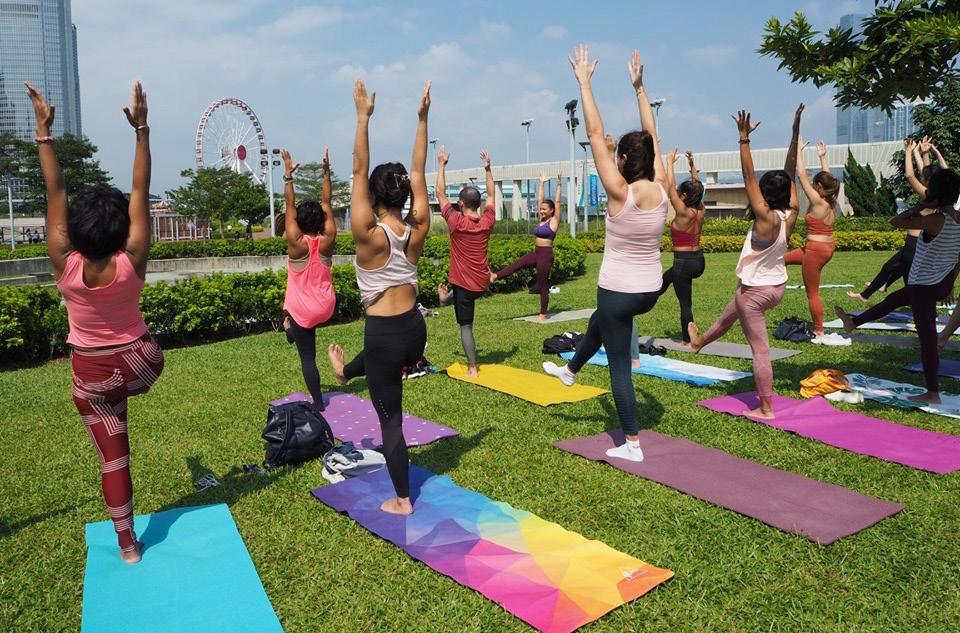
THE PEAK Caren’s Yoga Find your inner zen up the Peak. Caren Cohen is a Hong Kong expat and registered yoga teacher who offers a range of styles. She founded Caren’s Yoga with the aim of delivering the calming effect of the practice to busy Hongkongers and has recently partnered with The Peak Lookout to offer a wellness series which includes a one
hour yoga session followed by brunch. Check out her website for details of upcoming classes. carensyogapage.com
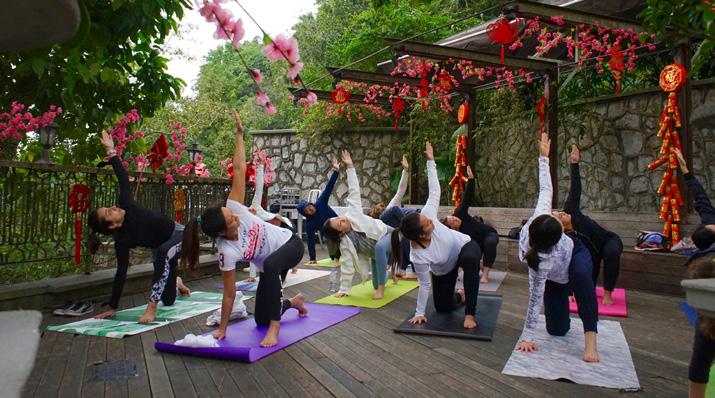
CENTRAL Cherry Yoga and Fitness Cherry took her first yoga class in 2012 and hasn’t looked back since. She trained to become a teacher and now hosts classes in Vinyasa flow, Yin and relaxing stretch (around $150 for one hour.) Cherry also offers regular outdoor classes in picturesque locations across Hong Kong including Deep Water Bay, Sun Yat Sen Memorial Park and Tamar Park. For
SAI KUNG Yoga B Explore Hong Kong’s great outdoors with registered yoga teacher and founder of Yoga B, Barbarah Dudman. Barbara hosts outdoor ‘hike and beach’ yoga sessions at Tai Long Wan in the Sai Kung Country Park. The half day sessions begin at Wong Shek Pier where students will take a scenic hike down to Tai Long Wan. Once at the beach, students enjoy an hour-long yoga class before the group retires for a locally prepared vegan lunch. $400, including speedboat transfers, lunch and yoga. The outdoor sessions can also be arranged for private groups of 10 or more - great for birthdays and bachelorette parties. yogabhk.wixsite.com/yogab


Java Yoga Certified yoga teacher Musya teaches free 60-minute yoga sessions every Sunday in either Tamar Park or Central Pier 10. She also hosts charity classes, the most recent being in aid of Australian animals affected by the wildfires. Join her on March 8 to celebrate International Women’s Day - a free one-hour session will take place at 4.30pm in Tamar Park. Bring your own mat. Facebook:javaunionyoga CENTRAL
Ayurvedic and energy healer Smita More shares her healing experience to build immunity and live a healthy, strong life.
Smita More is an Ayurvedic and energy healer based in Hong Kong. A few years ago, Smita was faced with a stomach ailment that would not go away despite multiple repeated treatments. She finally found relief in naturopathy and Ayurveda. Inspired by her guru and recovery, she decided to pursue natural healing as her career path. Today, she sees clients from all over the world through in-person and online sessions, where she heals by reading a patient’s energy and diagnosing the root cause of the problem.
How can energy healing help people prevent or cure sickness? Energy healing is a holistic practice that uses life force energy to remove blocks and stimulate the body’s ability to heal itself. It is a powerful healing technique where through sadhana, the energy flows from one human body to the internal organs of the sick. In Ayurveda, ancient saints would heal the diseased through chanting and minerals.
What are some yoga or meditation exercises someone can do to maintain a positive flow of energy? Martial arts, yoga and meditation with specialised breathing techniques practised by monks and yogis help to align body, mind and spirit. These practices strengthen the complete body

Is there a particular diet you recommend for optimum health? I practice Ayurveda, a 5,000-year-old ancient Indian science of long life. ‘Ayur’ means life and ‘veda’ means wisdom or knowledge of a long life. Ayurveda places emphasis on a balanced diet acknowledging the seasons, the environment, the digestion power and the constitution of the individual consuming it. The three main pillars of Ayurveda for good health are Ahara (food), Nidra (sleep) and Vihara (lifestyle). When all three come into balance we can achieve optimum health and live a long, stress-free life.
To find out more about energy healing or to book an appointment contact Smita at smitamore.com

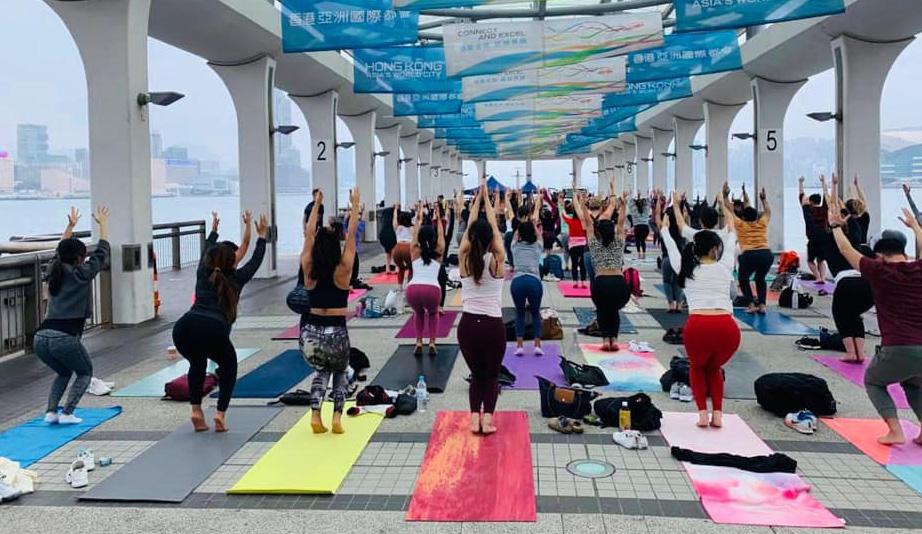
Picture perfect
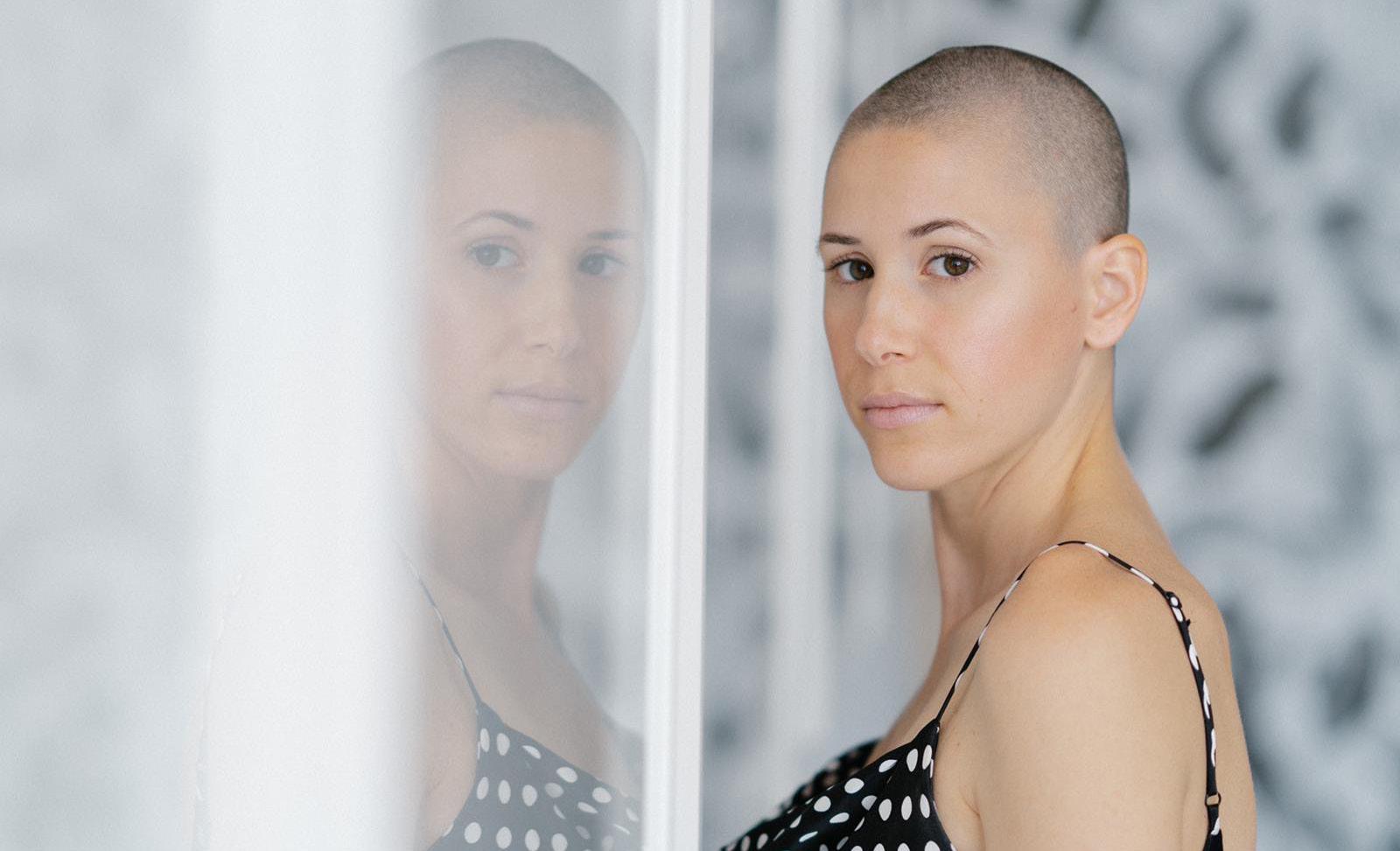
With art month cancelled, Nicole Slater throws her own arty party to celebrate Sai Kung artists
Roberta Boffo Roberta opened her Sai Kung studio, RAH Studio Gallery in March 2018. Her Chinese calligraphy inspired work has captured the eyes of art fanatics across Hong Kong. 1f, 11 Man Nin Street, Sai Kung. Facebook: robertaarthouse around me. As Simon Sinek says, “I have people that remind me that I am an infinite player. I play the infinite game, where there is always room to better myself, not for or against anyone else.”
What do you love about art? Art sets me free. I love being an artist because I don’t need to make sense to everyone. I can speak my own language freely and disconnect from the system.
What led you to become a professional artist? I grew up in an environment that cultivated art and creativity. My parents worked together in the fashion industry and when I was five, my mum would sew my drawings onto handmade dresses. My parents had so much faith in me.

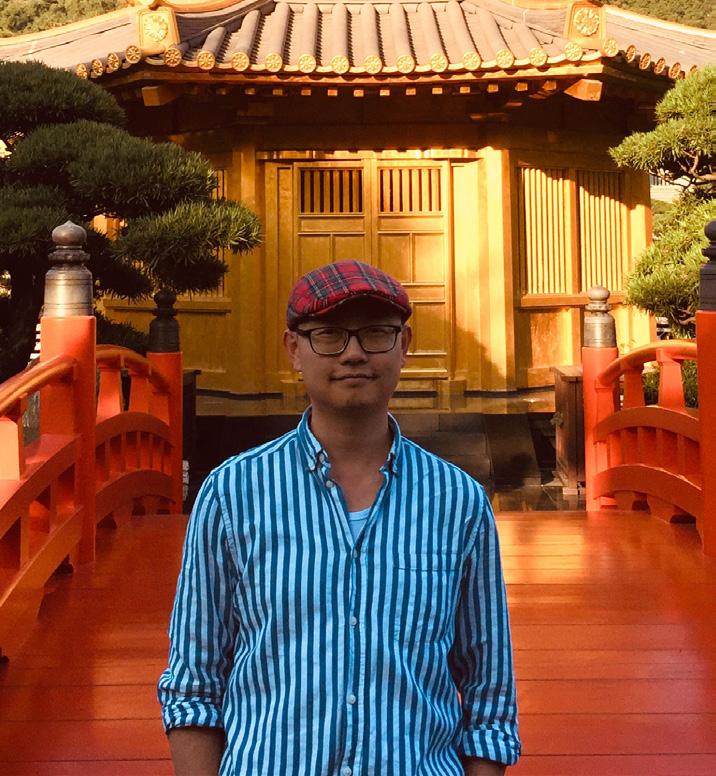
Gary Yueng Gary has lived in Sai Kung for over 20 years and uses his work to document the quieter side of the town. He is co-founder of Urban Sketchers Hong Kong and through live sketching sessions, he draws attention to places at risk of redevelopment. studiogario.com
Where do you get inspiration? From museums and galleries around the world. In London, my favourites include Tate Britain, the National Gallery and the National Portrait Gallery. Hong Kong’s diverse city and landscapes also encourage me to draw, paint and sketch.
What do you love about being an artist? The opportunity to create something that people can relate to.
Which piece are you most proud of? Without a doubt, the Sai Kung Egret. It’s an oil painting based on one of my live sketches. I love documenting the quieter side of Sai Kung waterfront, especially during weekdays. The boats in the typhoon shelter and the wildlife that coexists with us bring me peace.
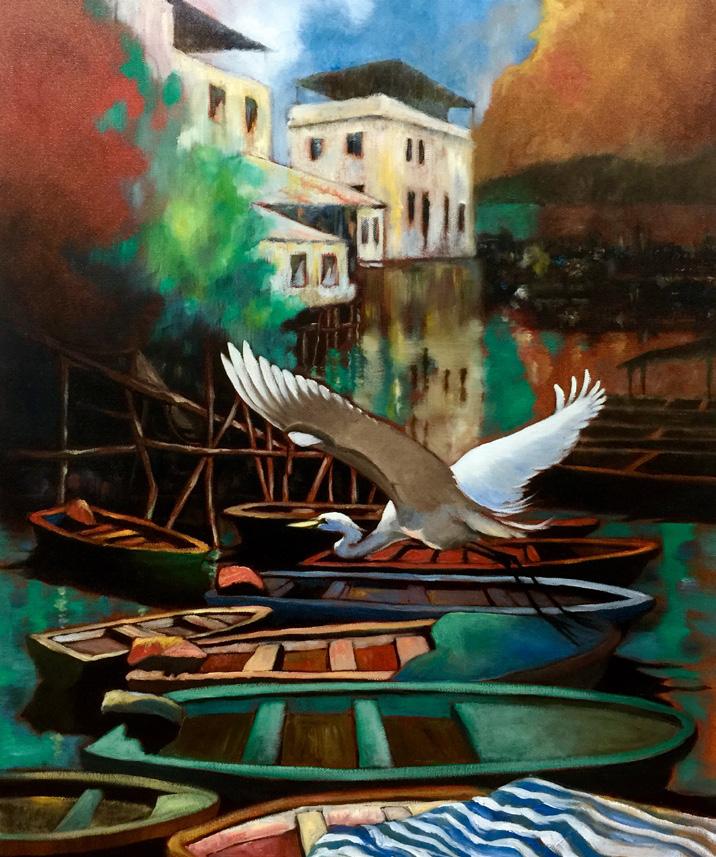
Mia Barrell University student Mia, grew up in Sai Kung. She is currently studying Illustration at Norwich University of the Arts in the UK. @miabarrellart
Who is your biggest inspiration? Yuko Shimizu, a Japanese artist who uses a mixture of traditional and digital practice. I enjoy the process of mono-printing and like to incorporate this medium within my illustrations.
What do you love about being an artist? The endless possibilities in what you can create and the sense of pride I feel when I see my work being used in the industry, or as decoration in a home.


What inspired you to become an artist? From the age of 10, I wanted to go to art school. I even started a fashion brand with my best friend when I was 11 - the clothes were pretty terrible! I used to get into trouble at school but my love of painting and drawing gave me a sense of success.
Who is your biggest inspiration? My art teacher, Mrs Logan used to wear fabulous clothes and was the only teacher who believed in me. It’s because of her that I became an art teacher.
What is the biggest challenge you’ve faced as an artist? There are moments when I feel that a career in the creative industry isn’t taken seriously enough, but the world is such a big place and there are countless opportunities.
Any advice for aspiring artists? Everything takes time. Don’t listen to people who say you won’t be able to make it in the industry. You must believe in yourself.
Kate Sparrow Kate is a Sai Kung-based artist and art teacher. She uses her work as a platform to express political statements. Her recent series entitled “I Am Woman” focuses on female empowerment. katesparrow.com

What is your favourite thing about being an artist? Art is your companion and it never lets you down. It takes me to a place where I feel alive and in the flow. Art for me isn’t relaxing though, it’s hard work!
What is the biggest challenge you’ve faced and how did you overcome it? When people try to tell you what you should make your art about. My political and controversial art pieces are challenging for some who think art should simply be something pretty to look at.
T h e
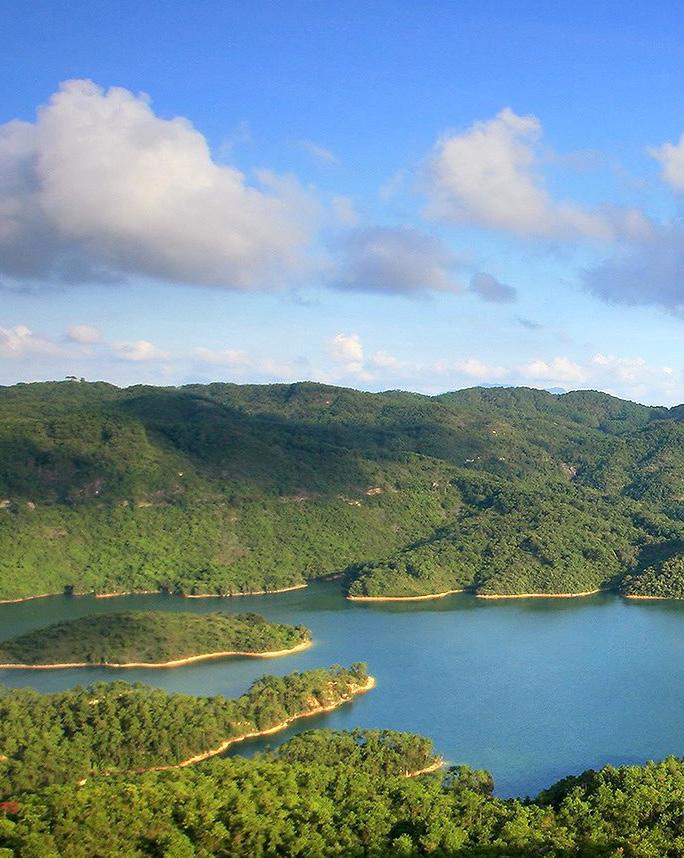
l a k e o f a t h R o r y M a c k a y e x p l o r e s t h e p i c t u r e s q u e l a

h o u s a n d i s l a n d s a n d s c a p e o f T a i L a m C h u n g R e s e r v o i r
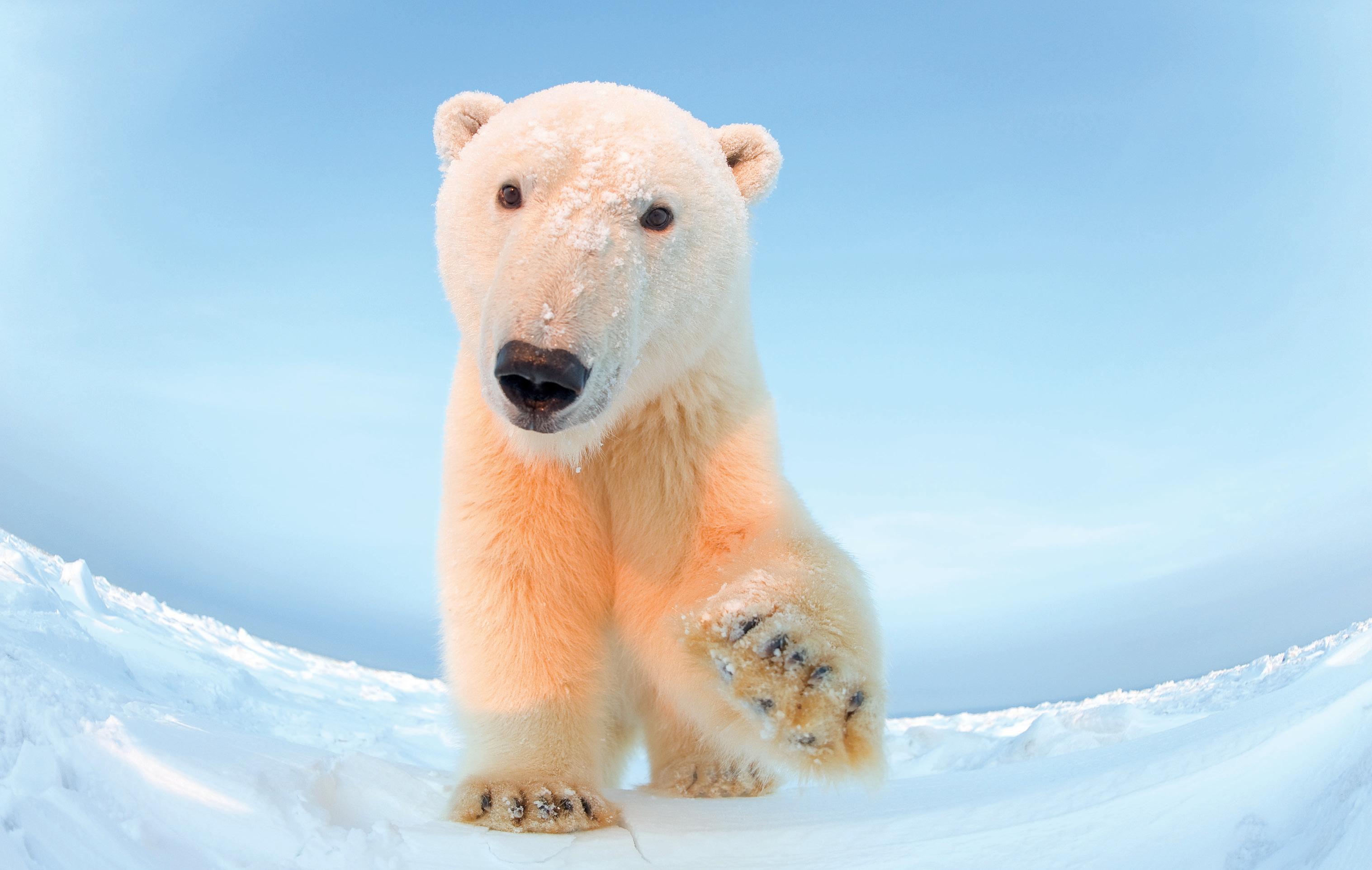

The Western New Territories is not an area famed for its natural wonders, but it has a few hidden gems worth uncovering. If you fancy exploring a natural world that most folks don’t even know about within Hong Kong, then a day trip to Tai Lam Chung Reservoir might be in order. Located in the hills between Tsuen Wan and Tuen Mun, it is a region as unknown as it is remote. However, the area is easily accessible via public transport and totally worth the effort to reach. Life moves at a different pace at Tai Lam Chung and the locals are as relaxed as they come in Hong Kong.
This pace rubs off quickly and once here, you certainly won’t be in a rush to leave. The area has an abundance of family friendly walks. The more intrepid can venture to the higher peaks of Tai Lam and Tai Mo Shan Country Parks.
The simplest way in (other than driving) is to head into the western New Territoires on the MTR West Rail Line (purple), disembarking at Tuen Mun Station. From there, ride the number 43 minibus, which departs roughly every 20 minutes, or catch a taxi to So Kwun Wat Tsuen. Hop off the bus at the end of its route and continue along the sealed road in a northerly direction. It’s easy going.
Passing through tranquil surroundings and a few small farms, you’ll soon climb up to Tai Lam Chung Reservoir. Built in 1957, the reservoir is often referred to as ‘the lakes of a thousand islands.’ Once an open valley with many small hills, now flooded, it has created a stunning freshwater archipelago that sets it apart from all other reservoirs in Hong Kong. These lakes

became the focal point of Tai Lam Country Park upon the park’s creation in 1979 and the shores serve as a good starting point for many different walking routes. The easiest of these circumnavigates the reservoir and provides a scenic stroll, suitable for families. Simply follow the MacLehose Trail Stage 10 and return via the route to So Kwun Wat, or finish in the nearby village of Tai Lam Chung Tsuen.
For those who fancy more of a challenge, there are various trails up and over the surrounding hillsides, offering stunning vistas over Tai Lam Country Park and across the sea to Lantau in the south. Additionally, there are a few watercourses flowing into the reservoir that feature small waterfalls, worth checking out. Walking around the lake can take anywhere from one hour to an entire day depending on your route. Marvel at your surroundings, once a park of Hong Kong that suffered from a lot of erosion, the last five decades have seen the
area transformed amid mass afforestation.
Return travel is fairly simple, more or less the same way as when you came in from So Kwun Wat. Unless you complete the route all the way around the lake- in which case you can find transport at Tai Lam Chung village to Tuen Mun or the Hong Kong Gold Coast.
This far-flung corner of Hong Kong has an incredible amount on offer for those who enjoy venturing into the wild; a day trip here serves up an insight into the city’s past and the full scope of landscape. Escaping to Tai Lam Chung provides a peaceful retreat for those wishing to find space for reflection or satisfy a burning urge of wanderlust. Views from above
Rory Mackay runs adventure company Wild Hong Kong. For more details visit wildhongkong.com
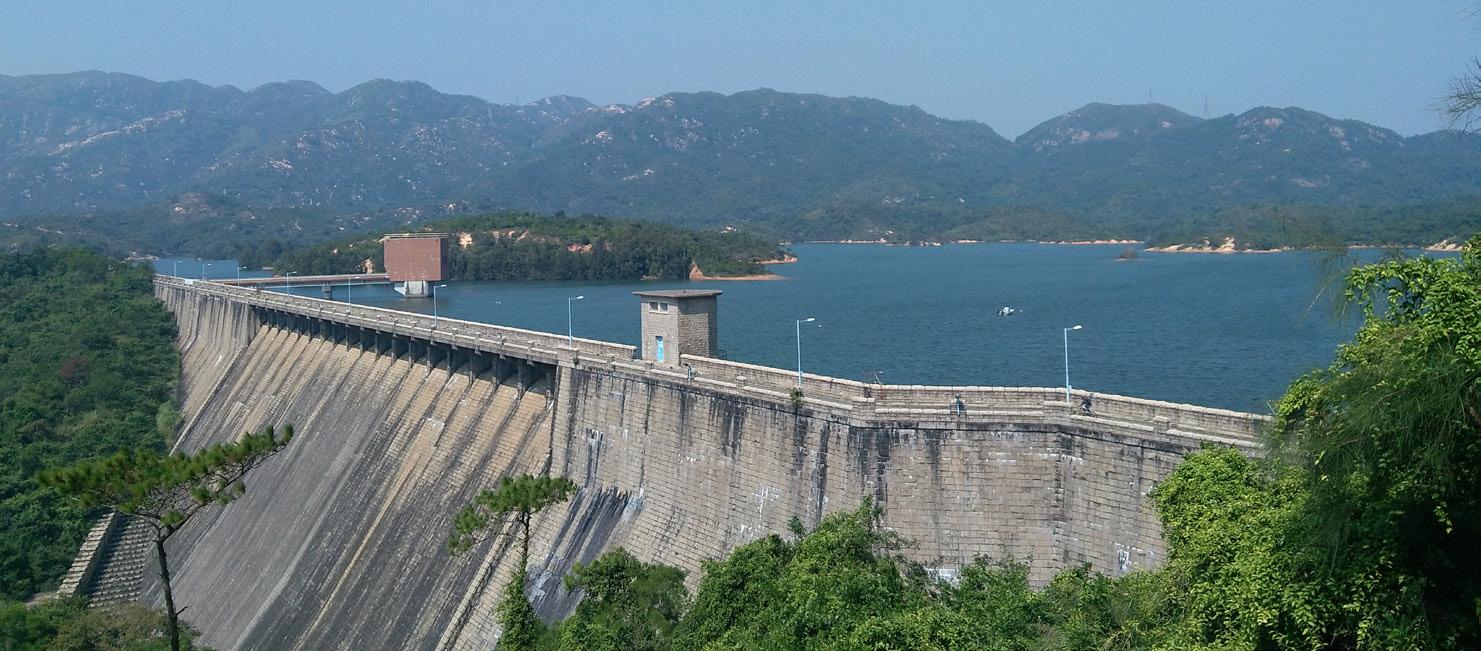
Local art watch
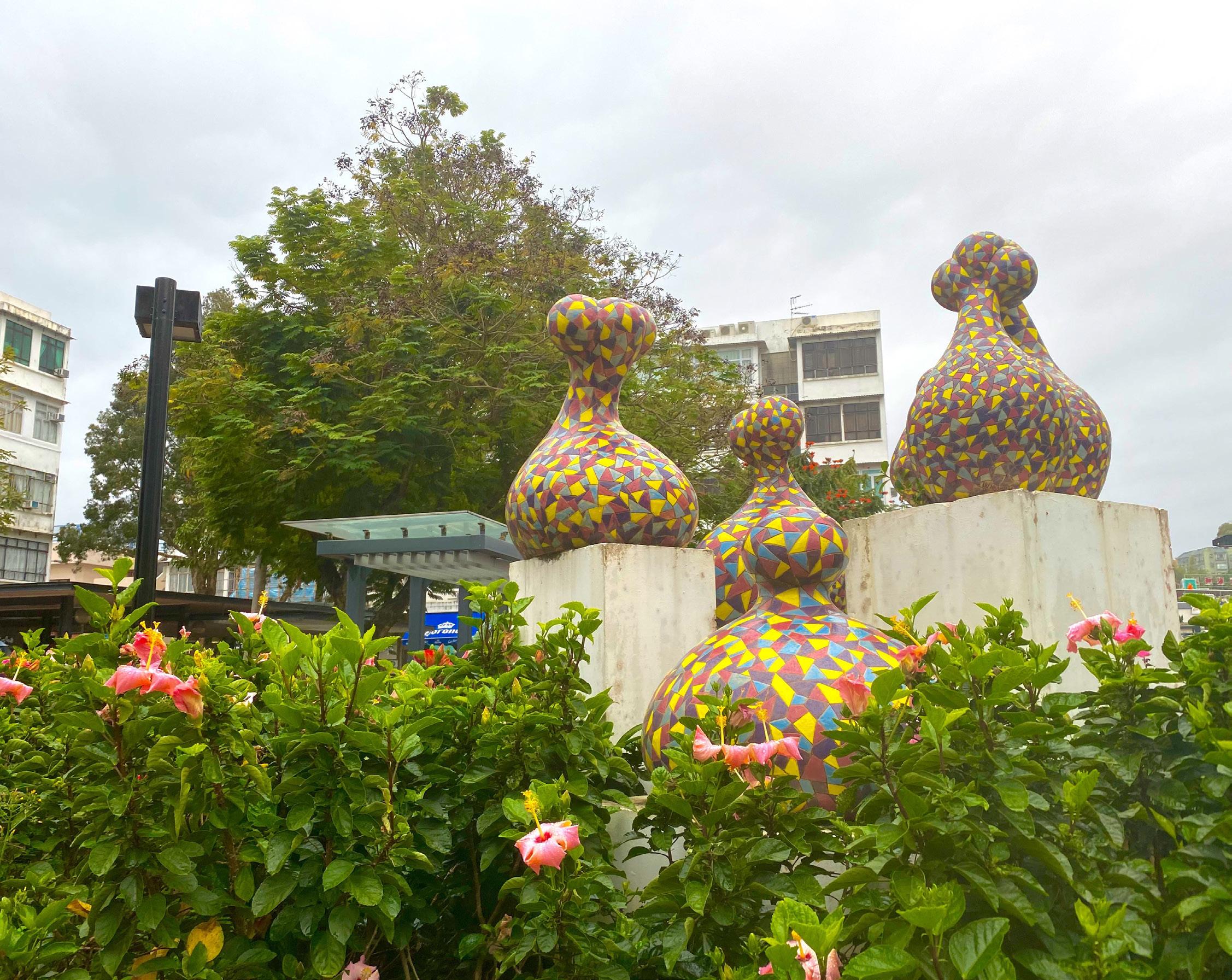
Nicole Slater discovers the story behind the Man Yee Playground sculpture
You’re probably already familiar with the eye-catching yellow and red sculpture in Man Yee Playground. The cheerful, mosaic-covered family of curvy shapes, called “Remembering Coral Reefs” was selected by the Sai Kung District council and has been on display in the playground since 2010. Ten years on, the sculpture still takes pride-of-place nestled in the flowerbeds between the playground and Man Yee Road.
The sculpture was one of four art pieces commissioned for the Sai Kung District Council Public Art Project in 2009. This project aimed to celebrate the diverse cultural background of Sai Kung. Local artist,
Amos Liu Huaqiang created the now iconic sculpture we see in Man Yee Playground using a traditional kiln in his ceramics studio in the old town.
Liu Huaqiang portrays meaning in the beauty of his work, this piece symbolises the danger we pose to marine life in the area and aims to raise public awareness about Hong Kong’s polluted marine ecosystem. The curvy shapes represent coral, with the colourful mosaics at the top symbolising healthy coral and a bone-white lower section representing calcified coral.
The waters around Sai Kung are home to over 94 species of coral, much of which has been damaged by the nets of bottomtrawlers which scrape along the seabed and smash the delicate coral heads. A ban on this practice in Hong Kong waters came into effect in May 2011.
Three other sculptures and artworks commissioned by Sai Kung District Council Public Art Project can be found in Tseung Kwan O, Po Tsui Park and Po Hang Park.
Know of a Sai Kung secret? Email editorial@hongkongliving.com
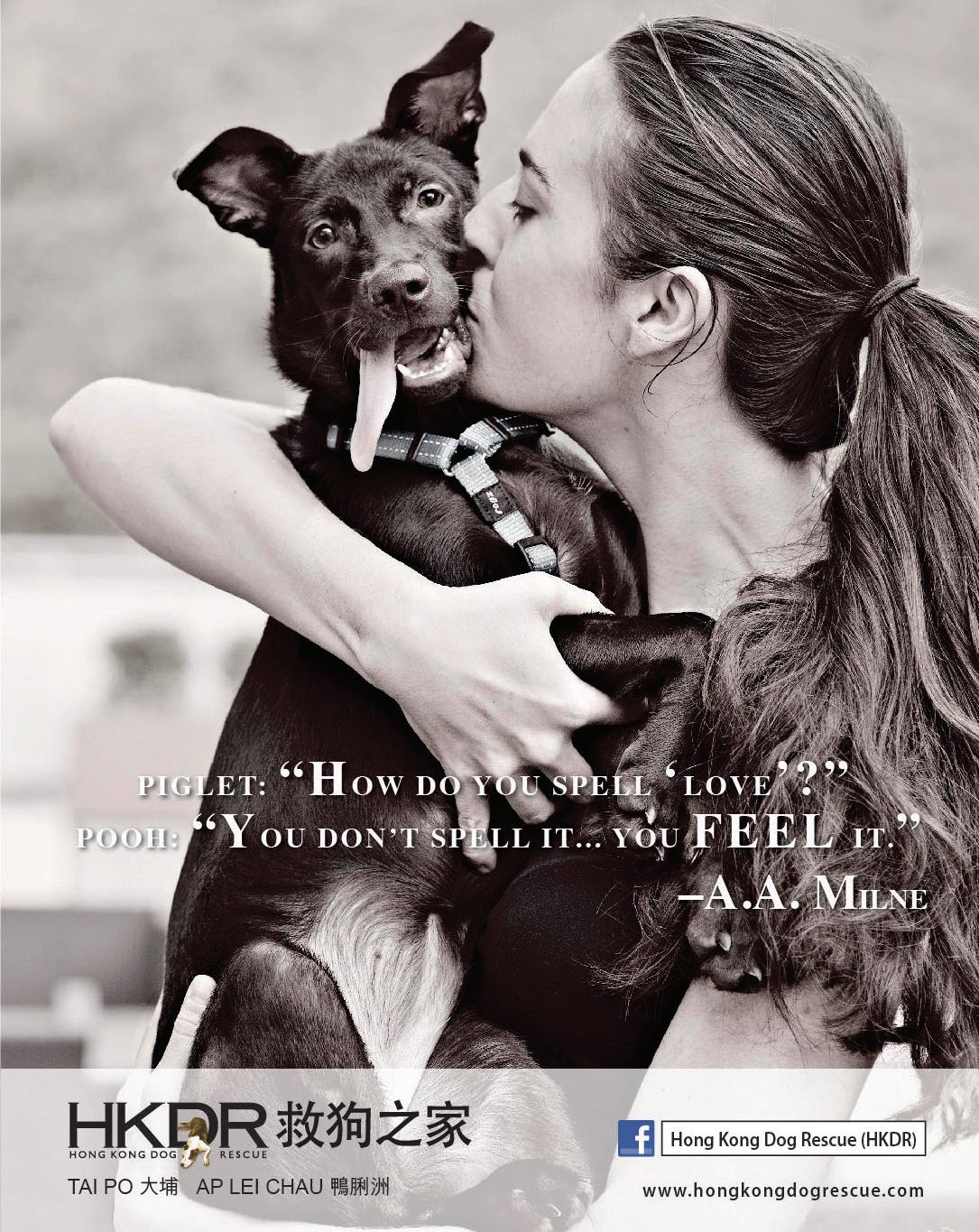
Developing district economies

Paul Zimmerman suggests how to develop district economies amidst the virus outbreak I n times of crises and job losses, a focus on developing our local economy is needed. Here is how.
Coronavirus is the masked chariot racer in ”Asterix and the Chariot Race'’. Eventually Asterix and his sidekick Obelix win out over the villain and his sidekick Bacillus (Latin term for bacteria!). This virus is not new. It is part of a large family of viruses that cause illness ranging from the common cold to more severe diseases such as Middle East Respiratory Syndrome (MERS-CoV) and Severe Acute Respiratory Syndrome (SARS). Virology scientists in Wuhan identified in 2005 a cluster of circulating bat virus with a potential for human emergence. This knowledge unfortunately did not translate into a clamp down on the exotic meat markets.
Hong Kong in 2003 overcame SARS which infected 1,755 and killed 299 locally. It is hard to predict what the final tally will be this time. With the hygiene efforts made by all, the epidemic will have been brought under control when the warm and humid weather returns. In the meantime, the focus is turning to the economy. The outbreak comes at a time of intense struggle over the extradition bill and political reform; a trade war with the USA; markets stretched by decades of quantitative easing; and all time high rents. Especially small businesses and freelancers are facing hard times. Many jobs have been lost and this will take a toll on people. A health crisis of a different kind is forming, just as damaging if not more so.
While our international finance industry keeps up, the local business stutters. We need to address this. Besides caring for medical and environmental hygiene, we need to stimulate the economy. It is the Commerce and Economic Development Bureau’s (CEDB) turn to do some heavy lifting. They have to go beyond finance, trade and tourism promotion. We need to identify drivers for jobs and grow the economy district by district.
In the Southern District, besides the large employers such as the hospitals and Ocean Park, the biggest driver for jobs is Aberdeen Harbour. Fish trade, seafood restaurants, boat building and servicing, cruising and recreational boating
Sunny days on Aberdeen Harbour
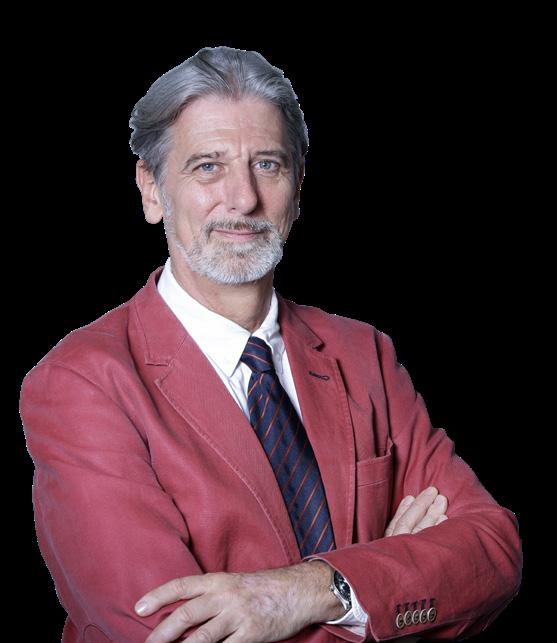
employs many. Skills have been passed on through generations for more than 150 years. The simplest way to invest in growth is by expanding the typhoon shelter with new breakwaters further out. This will allow more vessels to be moored safe from inclement weather.
Today the harbour is overcrowded and the market for mooring spaces has gone stratospheric. By increasing supply, more people can afford to enjoy Hong Kong’s great waters (1,500 square kilometres, 15 times our land mass), 800 kilometres of shorelines and some 280 islands. Similarly, CEDB can identify opportunities for new jobs in the other 17 districts. By doing so we not only overcome today’s challenges, we create a better city for tomorrow.
Paul Zimmerman is the CEO of Designing Hong Kong, a Southern District Councillor and the co-convenor of Save Our Country Parks alliance.
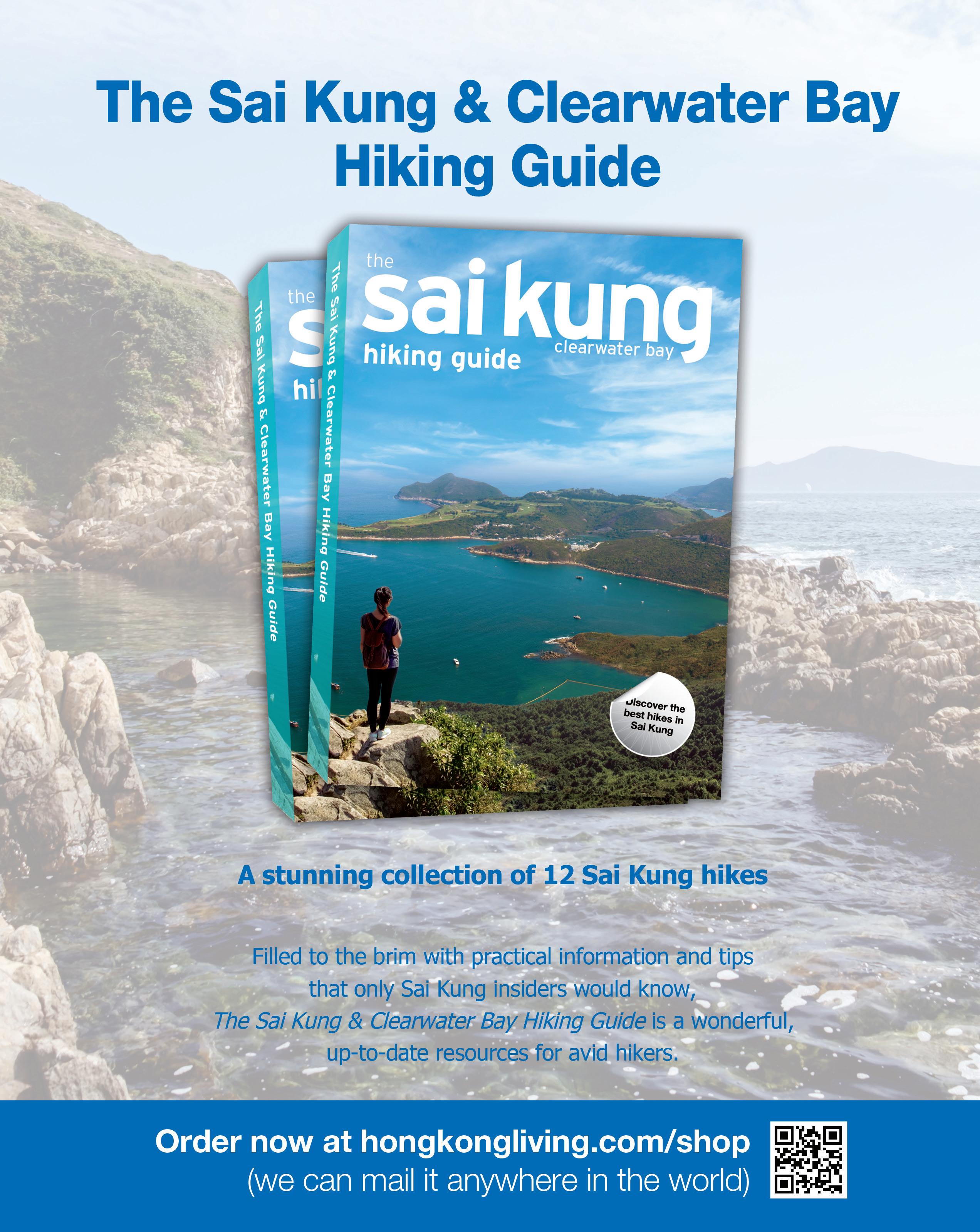
woof Ask a vet.. Dr Pauline Taylor answers your pet questions
We are preparing to relocate our dog. What can I do to help prepare him for a long-haul flight? I’m sorry to hear you are leaving this wonderful city and wish you well in your travels. First make sure your dog is healthy and fit to travel. A once over by your vet, maybe some tests, depending on his age and some routine preventive care for external and internal parasites. Vaccinations must be up to date and satisfactory for the country of import. Countries differ and change their rules so be sure you get the most up to date regulations. Prepare your dog by getting him used to his travel crate and drinking from a bottle. If your dog is small you may be allowed to take him as hand luggage so contact the airline to see if they allow this.
With the recent cold snap, what can I do to keep my cat warm? Normal healthy adult cats thermoregulate: this means they have the ability to maintain their temperature within certain boundaries between 37.7-39.1C (100-102.5F). Most mammals can do this. If cats feel cold they will move to a warmer spot. If that isn’t enough, their internal physiology kicks in; vasoconstriction helps to reduce heat loss via the skin, hairs will stand on end to trap air which further insulates and shivering helps to generate heat from muscle contractions. You can help by leaving a nice enclosed bed or box with blankets and window seats provide the opportunity to lie in the sunshine. Be aware that kittens under four weeks have difficulty controlling their body temperature because their metabolic activity isn’t yet developed. As such, it is important to keep them in warmer environments.
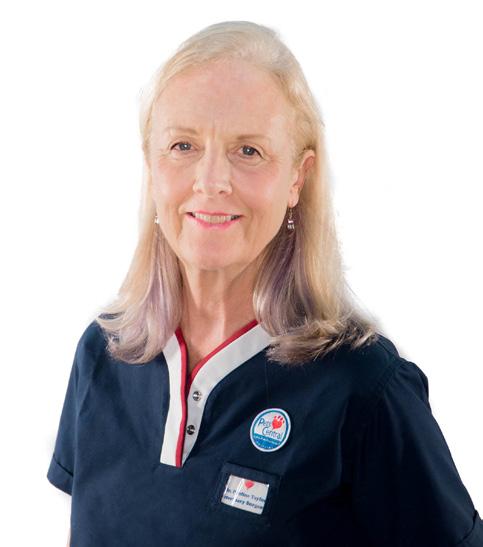
I’ve just adopted a new puppy. What are some non-harmful ways to teach him correct behaviour? It sounds like you are looking for tips on positive reinforcement training. It can be done easily so long as ALL family members are consistent and you start as young as possible is best. The main things to remember are: 1. No punishment 2. Avoid putting your pup in a situation where it could do something wrong and 3. Reward good behaviour. I’d introduce one word into his vocabulary that gently means “no”. I used “Uh Uh” with my new pup and when he stopped chewing I rewarded him with a treat or toy - even a cuddle may suffice. He soon got to learn that he gets rewarded for being good. Don’t forget however that at a young age most pups don’t know right from wrong so they need to be trained in order to recognise boundaries.
Got a question for Dr. Pauline? Email editorial@hongkongliving.com
Walkies With Mushu at Kennedy Town’s Instagram Pier
Dr. Pauline Taylor Pets Central veterinarian answers your questions.
Fancy a trip to the city but don’t want to leave your pooch inside all day? Kennedy Town is the perfect place for dogs. Head to one of the many coffee shops for a caffeine fix before walking down to the infamous Instagram Pier. The area, originally used as a container terminal and cargo dock, has been transformed into the perfect social spot for pets and owners alike with plenty of room to run off the lead and new sniffs around every corner. The pier has also become a popular place to take photos due to the stunning views it offers of Victoria Harbour, TST and Hong Kong Island, particularly at sunset. With

many residents and visitors taking this route, your pooch will love meeting a whole load of new furry friends, while you take in the views. Once your walk is finished, head over to one of the dogfriendly restaurants in the area including Little Creatures or Jaspas for a bite to eat. Mushu
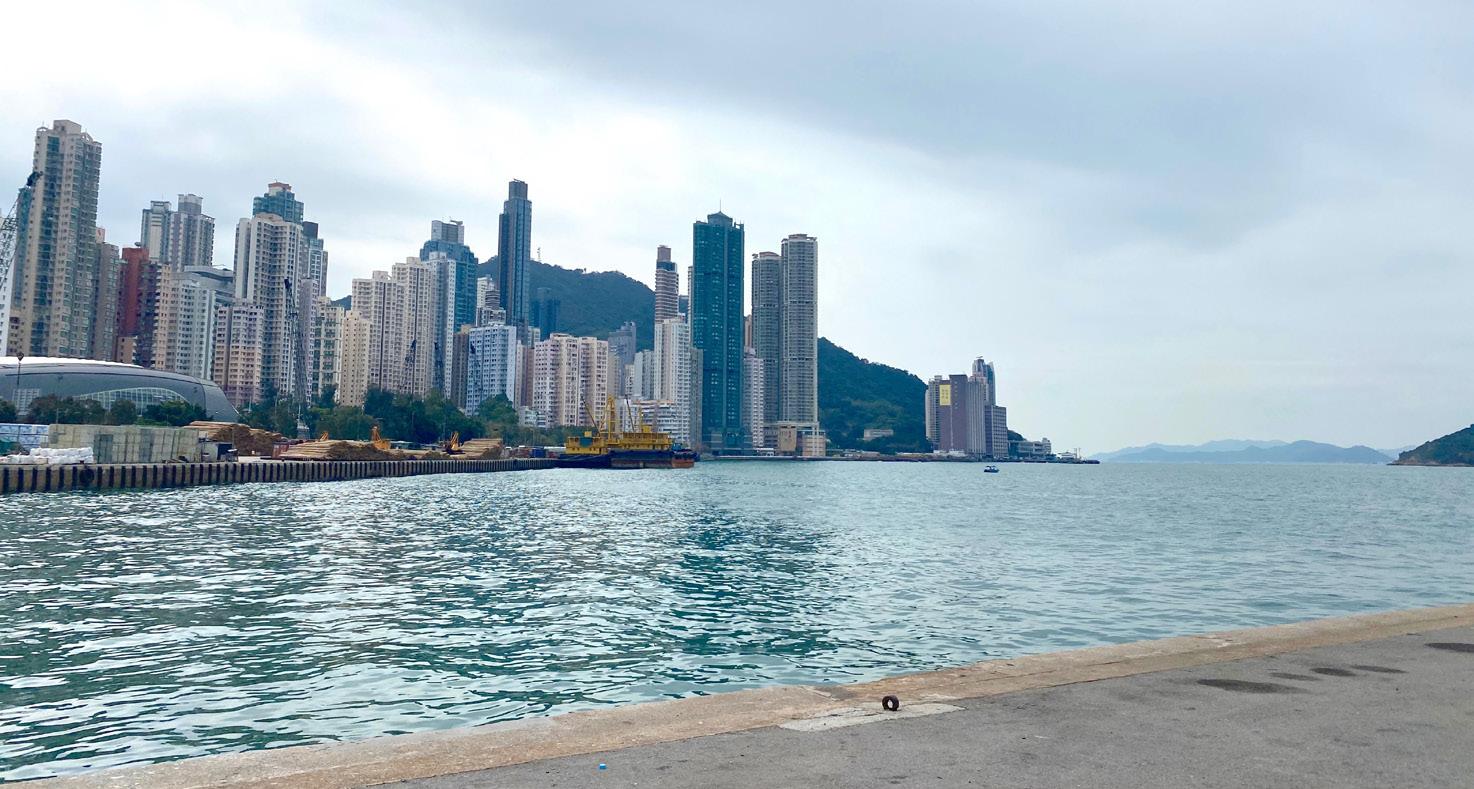
How to get there Drive or take a taxi to Kennedy Town (multiple car parks available and parking meters along the waterfront). Head on foot down Shing Sai Road in the direction of Central until you see the pier, also known as the Western District Public Cargo Working Area.
To advertise, email talk@hongkongliving.com or call 2776 2772.


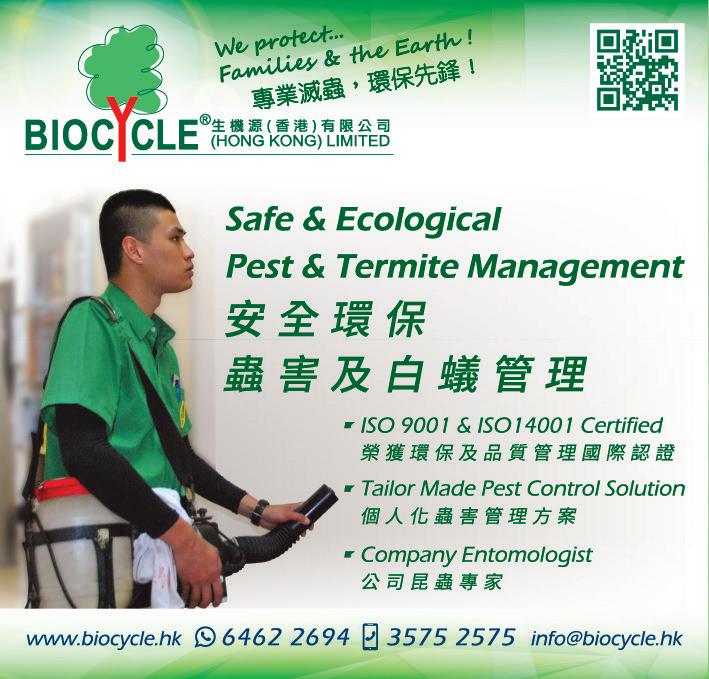


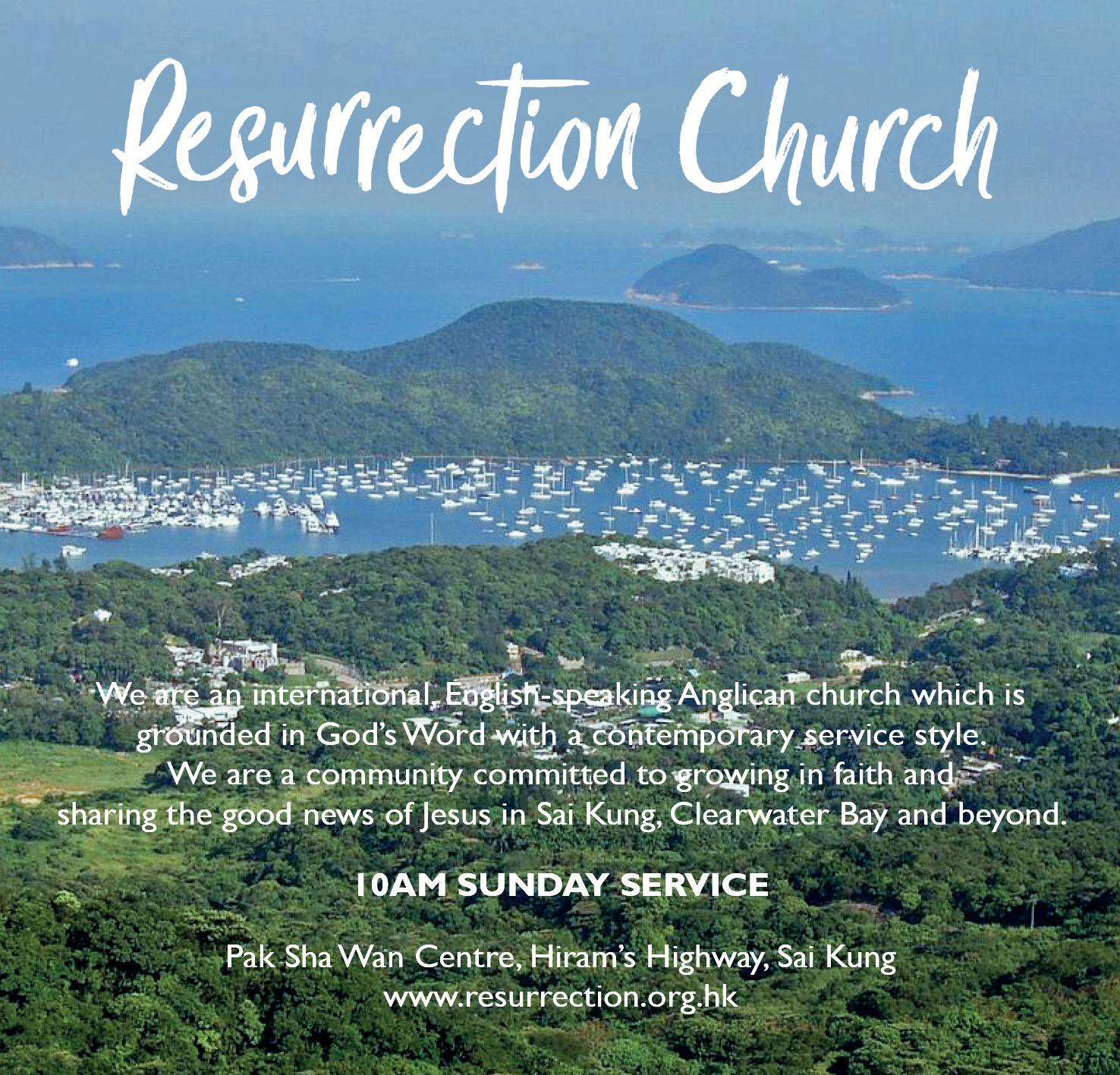





March weather facts

Average high temperature: 21.4°C Average low temperature: 17.2°C Average rainfall: 76.2mm (3”) Average rainfall days: 10 days Average sunshine hours: 3 hours
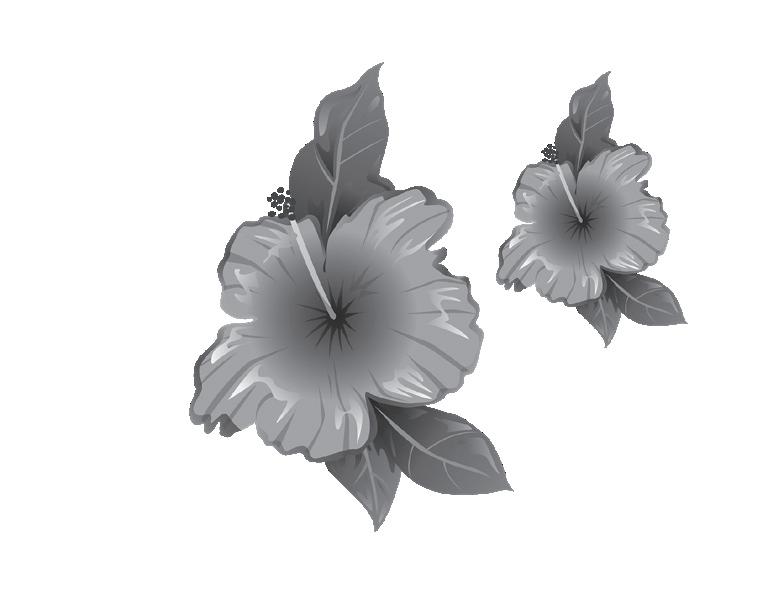



Time marches on. Spring comes in and brings along with it the enticing sweetness of the petrichor, just like how the soil sings when rain soaks it up at dawn. Now you can hear sprouts break the ground as they peek into the brand new world, curious to taste the sunshine and experience fresh air.. I, for one, am excited to experience a new season. Here, grab your shovel and let the winds of change blow.
Cuttings of Hydrangeas planted in January should now be rooted and may be potted. Propagate Coleus for pots and beds. Achimenes
may now be potted with particular attention being given to the drainage. Caladiums will now be starting to sprout and should be potted. Pot off Chrysanthemums from cutting pots. Prune Poinsettias. Put in cuttings of Begonias. Transplant annuals sown at the beginning of the month into boxes or pans. Give shrubberies a dressing of manure. Take up, divide and replant Cannas and Hedychiums. Seeds of Sunflowers, Clitora Ternatea, Zinnias, Torenia Fournieri, Cockscombs, Balsams, Isotoma longiflora, Moonflower, Amaranthus globosus and Chinese Palms may be sown. Order flower seeds from England for sowing in the autumn.
Seeds of the following may be sown: Mustard and Cress, Radish, Turnip, Chinese Spinach, French Beans, Cucumber, Lettuce, Sweet Corn, Chinese Long Bean and Ochroes. Plant out any seedlings ready from last month’s sowings Canvalias should be planted about 10 feet apart. Watercress may still be planted. Plant out Tomatoes raised from cuttings. Brinjals may be planted. Get stakes ready for Cucumbers, Canavalias (Sword Bean) and Chinese Long Beans. While you’re pPutting in the call to England, for order vegetable seeds too. Instruct seedsman to dispatch Celery seeds in time to arrive before the first week of July, and Tomato seed by the first week of August. Procure manure so that it may be in good condition for winter crops. Jerusalem Artichokes may still be planted. Do not panic if your garden is still recovering from the cold. As with all things in life, progress shows in due time, heed patience my friend.. It is important that we learn from our mistakes and make improvements. Who knows? One day you might earn a green thumb. By William James Tutcher F.L.S. (1867-1920) Superintendent of Hong Kong Botanical Gardens. Paraphrased from his seminal 1906 work Gardening for Hong Kong.
And here’s the rub because the incompetence in handling this epidemic is such that citizens lose confidence in all measures taken to control it. This lack of credibility is very dangerous and leads people to do pretty crazy things, including panic buying of essential goods that are not in short supply and flaunting health advisories because no one is sure who to believe.
Sai Kung steps forward to tackle a deadly virus.. again Multiple protests were held in Sai Kung Credit: Judith Owen-Jones
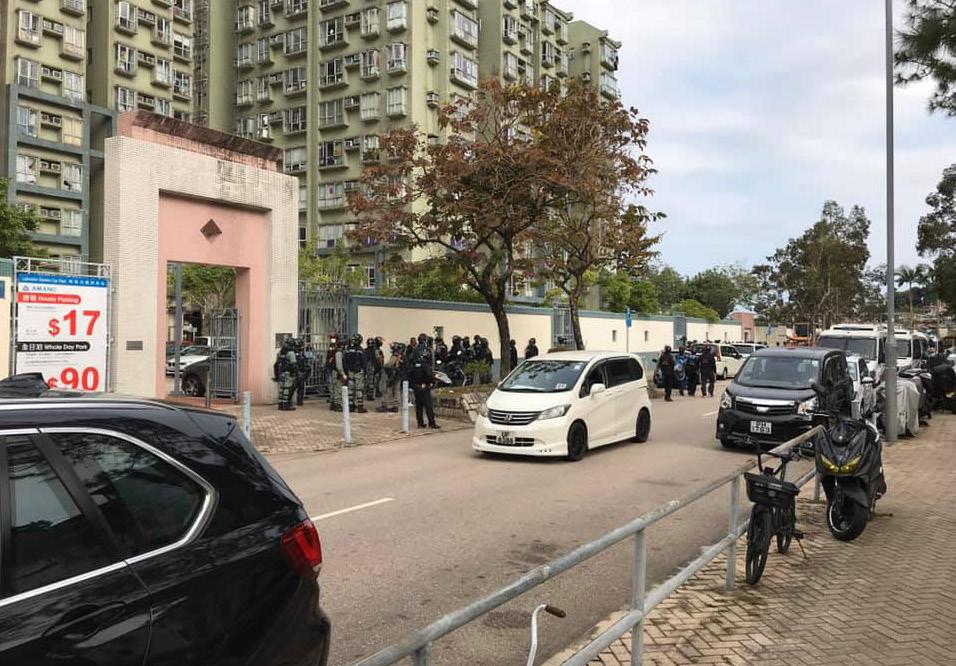
As it was during the SARS crisis, Sai Kung yet again finds itself at the epicentre of attempts to control the spread of a deadly virus. But this time with a difference as the government encountered protest over plans to establish a quarantine centre near the town centre in addition to two others in the district. Without even bothering to consult the district council or explain to residents, the government suddenly announced it would be establishing a quarantine centre at the Sai Kung Outdoor Recreation Centre, close to both Sai Kung town and Tui Min Hui. A protest was staged, with the police barely pausing before launching tear gas and pepper spraying individual protestors. The plan appears to have been withdrawn. At any rate this looks as though it is the case because, typical of the way this government works, there was no official confirmation that it had been withdrawn, it was merely taken out of official press releases detailing where the centres were to be located. Meanwhile two other quarantine centres were quickly filled with people suspected of having contacts with those who had contracted the Wuhan coronavirus. They are the Po Leung Kuk Jockey Club Pak Tam Chung Holiday Camp, at the entrance to the country park and a little further down the road at the Lady MacLehose Holiday Village camp. They were both previously pressed into service during the SARS crisis of 2003. There were no protests over these centres because of their lack of proximity to dense housing estates. As someone who happens to live more or less between these two centres I don’t feel a surge of not-in-mybackyard coming on because, unlike plans for other quarantine areas, these locations make sense. This cannot be said of the government’s barmy plans for establishing quarantine centres close to high rise housing both in Sai Kung and elsewhere. In practise they could probably have been sealed off and the fact that there is no evidence of airborne transmission could have been explained. But Hong Kong is cursed with a government that never misses a chance to miss a chance, so the bureaucrats plunge ahead with plans entirely ignoring the consequences of their blind arrogance. Stephen Vines reports on the recent coronavirus epidemic and other goings on around the town
Meanwhile Sai Kung town is again booming as citizens seek escape from the crowded urban areas where it is perceived that the Wuhan virus is more easily contracted. So, that’s a double bonus because our area was also seen as a haven during the height of the protest movement last year. We should be alright here as long as those numskulls in the government keep away.
The first sign of madness – being mad about signs
Talking of numskulls, my all-time favourite people from the Lands Department have been at it again. In one of their many circulars to holders of short term tenancies they have issued the following illiterate warning: ‘In view of the recent frequent protests and social movement (sic), we write to remind you the (sic) the requirements under the tenancy agreement in keeping the tenancy area in a clean and tidy condition, including the need to remove graffiti or unauthorised banners or signage, if any (sic)’.
If you’re mystified by this illiterate nonsense, let me explain that what they are talking about is the display of material supporting the protest movement. In fact there is nothing in the tenancy agreements preventing tenants from erecting posters or signage within these areas – although no doubt some ghastly little bureaucrat can find a sub clause of a sub clause that could be interpreted in this way. In reality this is yet another pathetic attempt to curb all expressions of discontent with a government which, frankly, does a far better job stimulating opposition by its own actions than could possibly be achieved by its opponents. Besides which this also raises the question of why on earth the Lands Department spends so much of its time, not forgetting taxpayer’s money, sending out circulars of this kind, each one more useless than the last.
Stephen Vines is a journalist, broadcaster and entrepreneur. He is the former editor of the Eastern Express and Southeast Asia correspondent for The Observer.











